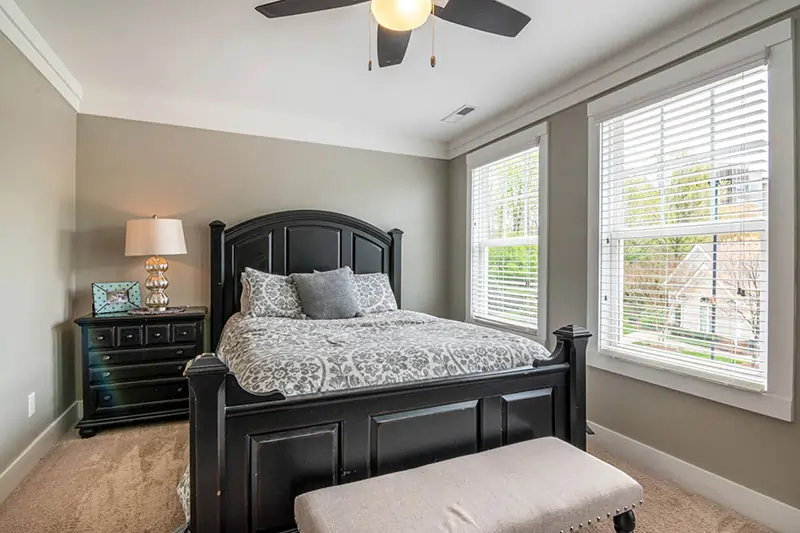Child-Friendly Décor Ideas for Australian Homes: A Guide to Daycare Interiors and Aussie Outdoor Blinds
Introduction
The demand for creating a child-friendly environment both at home and in daycare centers calls for understanding the need to promote well-being and development in children. The theme of integrating daycare interior with outdoor blinds is one of the key themes eminent in child-friendly home décors in Australia. This article tries to provide some insight and useful tips on designing daycare interiors and selecting outdoor blinds with an aim for a safe, vibrant, and stimulating setting for kids.
Australian Daycare Interiors and Outdoor Blinds: Child-Friendly Decor Ideas
Designing daycare interiors and choosing outdoor blinds are important decisions to make them suitable for the growth and development of children. If the parents, teachers, and caregivers are well aware of the impact color could make, the type of furniture to use, ways of storage, precautions regarding safety, and playgrounds in the outdoors, they can plan an environment that assists in the physical, mental, and emotional development of the children.
Daycare Interiors
Color Schemes
The selected colors of a daycare interior design will strongly influence the mood, behavior, and creativity of the children. While bright colors like red, yellow, and blue can give energy and stimulate young minds to get energized, softer shades of green and purple tones down the level of energy in younger children and help them relax. Utilizing these different colors in playing areas, activity zones, and learning areas can visually stimulate the children to be more curious about learning and developing their creativity.
Furniture Selection
Comfort, safety, and functionality are some of the key concerns in choosing furniture for daycare interiors. Child-sized tables, chairs, and shelving allow children to be independent while creating a considerate and accepting setting. Appropriately designed furniture to enable mobility while encouraging posture is critical in providing healthy physical development for young children.
Storage Solutions
Efficient storage facilities help in keeping toys, books, and art materials in their correct places for easy access by the children. Besides, the use of labeled bins, low-lying shelves, and transparent comparments in storage facilities will help promote tidiness and independence in the young learners. Open storage systems showcasing materials and resources will also stir curiosity, creativity, and ownership and responsibility.
Safety Measures
Childproofing daycare interiors is all about installing the features of safety and security. It involves softening sharp edges, securing furniture to walls, and installing safety gates along with door locks that forbid injury incidents at daycare centers.
Besides regular maintenance and inspection of play equipment, electrical outlets, and furnishings are the other fundamental requirements in daycare institutions.
Aussie Outdoor Blinds
Benefits of Outdoor Spaces
The outdoor playing areas confer several benefits on young children’s health, both physically and mentally. The natural light and fresh air develop a healthy constitution in children, whereas outdoor playing develops the body through exercise, senses through exploration, and social interaction with others. Moreover, in the outdoors, children have ample opportunities for free play, promoting creativity, imagination, and problem-solving abilities among children.
Benefits:
- Physical development through active play
- Emotional well-being through nature connection
- Cognitive stimulation through sensory experiences
Types of Blinds
With Australia’s climate, one ought to have the right type of outdoor blind to protect them from the sun and elements. The more common Aussie outdoor blinds include Ziptrak blinds, café blinds, retractable awnings, roller shutters, and PVC blinds – all these are popular for different reasons in providing sunlight protection, wind resistance, or customization options. Each of these has variances in respective features for different outdoor uses and weather conditions; thus, each serves versatility in the daycare setting.
Design Tips
Outdoor blinds can enable day light shading and privacy protection in daycare settings. With thoughtful installation of shades, defining a play space, and incorporation of materials for all-weather, outdoors may be designed to become multi-functional and more usable. Blinds may also define the space, bring in sensory components, and add visual appeal to outdoor play areas.
Design Tips:
- Create flexible shaded areas for different activities
- Utilize clear blinds to retain visibility and natural light
- Incorporate playful patterns or colors on blinds
- Consider motorized blinds for ease of use and safety
- Ensure blinds are easy to clean and maintain
Integration of Daycare Interiors and Outdoor Blinds
Daycare interior and outdoor blinds should be harmonious in creating a cohesive and functional environment that provides much interaction among children, helping them not to feel differentiated. In creating a harmonious environment, one considers color scheme alignment, coordination of furniture designs, and free flow of areas from indoor to outdoor. Of course, cleaning indoors and outdoors should also be regularly done, along with repair and safety checks, to make sure the space as a whole will last and function right.
Maintenance Tips:
- Regularly inspect and clean outdoor blinds
- Check and repair any damaged furniture or equipment
- Monitor indoor air quality and ventilation
- Conduct safety drills and emergency preparedness assessments

Conclusion
Consequently, the incorporation of child-friendly décor ideas in Australian homes has become an activity important to daycare interiors and outdoor blinds in developing curiosity and safe space for children. The impact of color, selection of furniture, storage solutions, safety measures, outdoor play areas, and the selection of outdoor blinds will all combine to allow parents, educators, and caretakers to create an environment for children that will stimulate physical, cognitive, and emotional development. Such coherence in design, combined with regular maintenance and following safety standards, forms the best premise for children’s growth, learning, and well-being.




